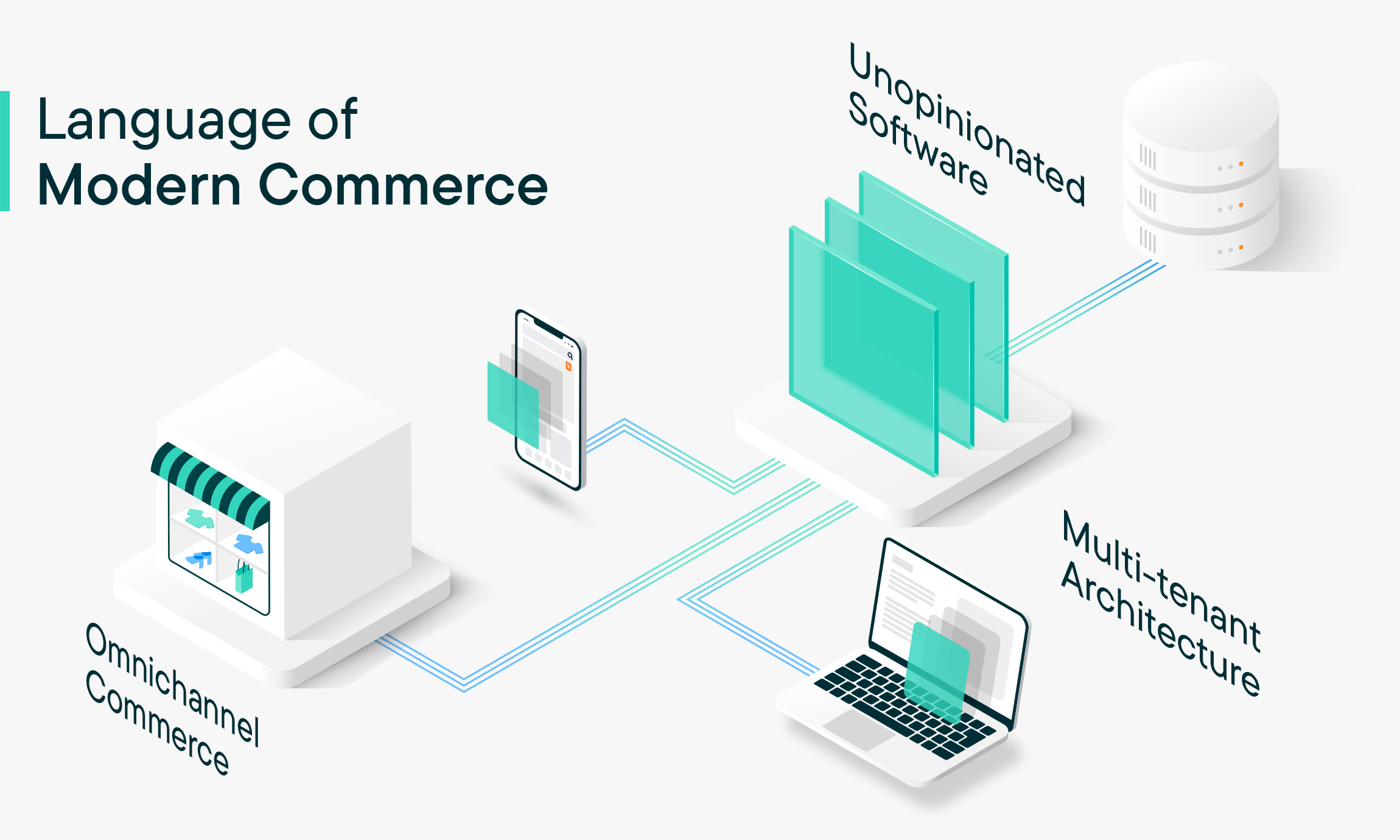In today's ever-evolving business landscape, staying ahead of the curve means not only embracing innovation but also understanding the tech terms that are shaping the future of commerce. As the digital world continues to expand, new concepts, technologies, and strategies are emerging, transforming the way we conduct business. In this installment of our glossary series, we'll demystify three essential tech terms: Multi-tenant architecture, Omnichannel commerce, and Opinionated/Unopinionated software.

Multi-tenant Architecture: Building for Scale and Efficiency
In the world of modern commerce, scalability and efficiency are paramount. Multi-tenant architecture, often abbreviated as MTA, is a term that's gaining prominence due to its ability to address these crucial needs. Put simply, multi-tenant architecture refers to a software architecture where a single instance of an application serves multiple customers, referred to as tenants. This approach offers several benefits, including cost-effectiveness, simplified maintenance and streamlined updates.

Multi-tenancy is the single most valuable tenet of cloud computing and ‘real’ cloud-based commerce platforms. Fundamentally, multi-tenancy is sharing resources. A single vendor builds, installs, runs and manages software that multiple customers share.
Chief Strategy Officer, commercetools
Think of multi-tenant architecture as a high-rise building with multiple apartments. Each apartment is a separate "tenant." While all tenants share the same building resources, such as access to water and electricity, each maintains their own distinct space. This approach creates multiple efficiencies while also providing privacy and security.
Similarly, in the digital realm, different businesses can share the same underlying software infrastructure while having their own isolated spaces. This not only optimizes resource utilization but also allows businesses to efficiently scale up or down based on demand.
Omnichannel Commerce: Seamlessly Connecting Every Touchpoint
In a world where consumers interact with brands through various channels, from online stores to social media and physical locations, achieving a seamless customer experience is a top priority. Enter omnichannel commerce, a term that encapsulates the strategy of creating consistent and integrated experiences across all customer touchpoints.
We help [customers] imagine a future when introducing a new product, promoting a sale, changing a price or billing process — anything they have to do to run their business — doesn’t require updating every single individual system. It doesn’t even require contacting us to help. Everything is connected and seamless. The omnichannel dream delivered.
VP of Global Solutions Consulting, commercetools
Imagine a symphony orchestra, where each instrument contributes to a harmonious composition. Similarly, in omnichannel commerce, every channel works in harmony to provide customers with a unified experience. Whether a customer starts their journey online and makes a purchase in-store, or vice versa, the experience remains consistent and interconnected. This approach not only enhances customer satisfaction but also fosters brand loyalty and engagement.
Opinionated/Unopinionated Software: Finding the Right Balance
In the realm of software development, the terms "opinionated" and "unopinionated" refer to the level of guidance and structure a software solution provides. An opinionated software solution, often referred to as a framework, comes with a predefined set of conventions, best practices and design patterns. It guides developers in a specific direction, which can expedite development but might limit flexibility.
On the other hand, unopinionated software, often referred to as a library, provides a more flexible and modular approach. It offers a toolkit of functions and components, allowing developers to choose their own architecture and design decisions. While unopinionated software grants greater freedom, it can also require more effort in terms of decision-making and design.
With every other commerce platform on the market, you must write all of that custom code according to the framework defined by your vendor. They are all opinionated platforms…By being unopinionated, we [commercetools] allow developers of all skills to contribute.
Chief Strategy Officer, commercetools
Think of opinionated software as a guided tour where the route is pre-planned for efficiency, while unopinionated software is akin to a road trip where you have the freedom to choose your destinations and routes. Striking the right balance between the two approaches depends on the project's complexity, the development team's expertise and the desired level of customization.
Conclusion
In the ever-changing landscape of modern commerce, understanding and embracing these tech terms is crucial for staying competitive and relevant. Multi-tenant architecture enables businesses to scale efficiently, omnichannel commerce fosters seamless customer experiences, and the choice between opinionated and unopinionated software shapes the development process.
Just as a ship needs a skilled captain to navigate stormy seas, businesses need to grasp these tech terms to steer their course toward success in the dynamic world of commerce. By embracing these concepts, leaders can confidently navigate the intricate waters of modern commerce and harness the power of technology for sustained growth and innovation.
If you’re considering embarking on a digital transformation journey to help drive your future success, don't miss out on the chance to experience the remarkable potential of composable commerce firsthand. Sign up for a free 60-day trial to test drive the commercetools Composable Commerce solution. Whether you choose to start from scratch or experiment with the pre-loaded B2C fashion retail data provided, it’s a great opportunity to explore its capabilities and features at no cost, no risk. Your composable future awaits!